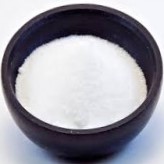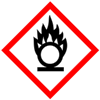Sodium Nitrite SDS MSDS of Manufacturers & Exporters
Please visit Sodium Nitrite USP NF ACS BP Ph Eur EP JP IP Analytical reagent FCC Food grade Manufacturers our associates world class FDA-GMP approved, ISO-9001 Certified facility Anmol Chemicals

Sodium Nitrite CAS Number 7632-00-0
Sodium Nitrite SDS, Safety Data Sheet
MSDS, Material Safety Data Sheet 06-July-22
1: Section 1: Chemical Product and Company Identification
Product Name & Other Names: Sodium Nitrite or Nitrous acid, sodium salt.
CAS No.: 7632-00-0
EINECS EC Number: 231-555-9
Molecular Weight: 69.00
Chemical Formula: NaNO2
Relevant uses and uses advised against (if any): Industrial Manufacturing.
Suppliers: As per letterhead.
Section 2: Hazards Identification
GHS, Globally Harmonized System Classification in accordance with 29 CFR 1910
Classification according to Regulation (EC) No 1272/2008
Oxidizing solids Category 3, H272
Acute toxicity, oral Category 3, H301
Skin corrosion/irritation Category 2, H315
Serious eye damage/eye irritation Category 2B, H320
Specific target organ toxicity, single exposure; Respiratory tract irritation Category 3, H335
Hazardous to the aquatic environment, acute hazard Category 1, H400
Labeling according to Regulation (EC) No 1272/2008
GHS Label Elements

Oxidizing Solid |
GHS Label Elements

Aquatic Toxicity |
GHS Label Elements

Toxic |
Signal Word: Danger
Hazard Statements:
H272: May intensify fire; oxidizer.
H301: Toxic if swallowed.
H315: Causes skin irritation.
H320: Causes eye irritation.
H335: May cause respiratory irritation.
H400: Very Toxic to aquatic life.
Precautionary Statements
P210: Keep away from heat/sparks/open flames/hot surfaces – No smoking.
P220: Keep/Store away from clothing/…/combustible materials.
P221: Take any precaution to avoid mixing with combustibles.
P260: Do not breathe dust/fume/gas/mist/vapors/spray.
P264 Wash thoroughly after handling.
P270 Do not eat, drink or smoke when using this product.
P280 Wear protective gloves/protective clothing/eye protection/face protection.
P330: Rinse mouth.
P301+P310: IF SWALLOWED: Immediately call a POISON CENTER or doctor/physician. P301+P330+P331 IF SWALLOWED: rinse mouth. Do NOT induce vomiting.
P302+P35: IF ON SKIN: Wash with soap and water.
P304+P340 IF INHALED: Remove victim to fresh air and keep at rest in a position comfortable for breathing.
P305+P351+P338: IF IN EYES: Rinse cautiously with water for several minutes. Remove contact lenses, if present and easy to do. Continue rinsing.
P332+P313: If skin irritation occurs: Get medical advice/attention.
P337+P313 If eye irritation persists: Get medical advice/ attention.
P370+P378: In case of fire: Use water or water-spray or foam for extinction.
P362: Take off contaminated clothing and wash before reuse.
P391: Collect spillage.
Section 3: Composition and Information on Ingredients
Product Name & Other Names: Sodium Nitrite or Nitrous acid, sodium salt.
CAS No.: 7632-00-0
EINECS EC Number: 231-555-9
Section 4: First Aid Measures
Always seek medical attention after first aid measures are provided.
Eye Contact: Immediately flush eyes with plenty of water for at least 15 minutes, lifting lower and upper eyelids occasionally. Get medical attention immediately.
Skin Contact: In case of contact, immediately flush skin with plenty of water. Cover the irritated skin with an emollient. Remove contaminated clothing and shoes. Cold water may be used. Wash clothing before reuse. Thoroughly clean shoes before reuse. Get medical attention.
Inhalation: If inhaled, remove to fresh air. If not breathing, give artificial respiration. If breathing is difficult, give oxygen. Get medical attention immediately.
Ingestion: If swallowed, do not induce vomiting unless directed to do so by medical personnel. Never give anything by mouth to an unconscious person. Loosen tight clothing such as a collar, tie, belt, or waistband. Get medical attention immediately.
Section 5: Fire and Explosion Data
Fire: Not combustible, but substance is a strong oxidizer and its heat of reaction with reducing agents or combustibles may cause ignition. Increases the flammability of any combustible material.
Explosion: Contact with oxidizable substances may cause extremely violent combustion. May explode when heated to 537C (1000F) or on severe impact or on contact with cyanides, ammonium salts, cellulose, lithium, potassium plus ammonia, and sodium thiosulfate.
Fire Extinguishing Media: Water or water spray in early stages of fire. Foam may also be used but avoid the use of multi-purpose dry chemical fire extinguishers where contact with sodium nitrite may occur. Water streams may scatter molten material.
Extinguishing Media Not recommended: None specified.
Special Information: In the event of a fire, wear full protective clothing and NIOSH-approved self-contained breathing apparatus with full face piece operated in the pressure demand or other positive pressure mode. At high temperatures under fire conditions, it may produce toxic or irritating fumes. Fire-extinguishing work is done from the windward and the suitable fire-extinguishing method according to the surrounding situation is used.
Section 6: Accidental Release Measures
Personal precautions, protective equipment, and emergency procedures: Avoid breathing dust/fumes/gas/mist/vapors/spray. Use individual protective equipment (waterproof boots, suitable protective clothing, safety glasses, etc.). Restrict unprotected personnel from the area. Prevent any contact with hot surfaces. Do not approach facing the wind. Do not touch the spilled material.
Environmental precautions: Do not let the product enter drains, soil, or water sources.
Methods and materials used for containment cleanup procedures and Storage:
Small Spill: Use appropriate tools to put the spilled solid in a convenient waste disposal container. Clean up spills in a manner that does not disperse dust into the air. Use non-sparking tools and equipment. Reduce airborne dust and prevent scattering by moistening with water.
Large Spill: Remove all sources of ignition. Do not inhale dust, vapors, mist, or gas. Avoid dust formation. Contain spilled material. Cover with an inert, non-combustible absorbent material, (e.g., sand, earth, diatomaceous earth, vermiculite). Use a shovel to put the material into a convenient waste disposal container. Finish cleaning by spreading water on the contaminated surface and allow to evacuate as per law.
Section 7: Handling and Storage
Precautions for safe handling: Keep away from sources of ignition. Keep away from combustible material. Do not ingest. Apply according to good manufacturing and industrial hygiene practices. Ensure proper ventilation. In case of insufficient ventilation, wear suitable respiratory equipment. Wash thoroughly after handling. Do not drink, eat, or smoke while handling. Avoid contact with skin, eyes, and clothing. Minimize dust generation. Avoid breathing dust/fumes/gas/mist/vapors/spray. Keep container tightly closed. Avoid ingestion and inhalation. Use individual protective equipment (waterproof boots, suitable protective clothing, safety glasses, etc.). Prevent any contact with hot surfaces.
Conditions for safe storage, including any incompatibilities: Store in cool, dry, and ventilated area away from heat sources and protected from sunlight in tightly closed original container. Keep air contact to a minimum. Store protected from heat, sparks and ignition sources and incompatible materials. Avoid contact with skin and eyes. Avoid inhalation of dust/mist/vapor. Do not store with incompatible materials like strong oxidizing agents, acids, alkalis, reducing agents, organic materials, metals, and combustibles. Oxidizer. Hygroscopic. Air sensitive.
Section 8: Exposure Controls/Personal Protection
Exposure Limits: This product does not contain any hazardous materials with occupational exposure limits established by the region-specific regulatory bodies. There is a blanket recommendation of 10 mg/m3 for inspirable dusts or mists when limits have not otherwise been established.
Engineering Controls: Use process enclosures, local exhaust ventilation, or other engineering controls to keep airborne levels below recommended exposure limits.
Ventilation System: A system of local and/or general exhaust is recommended to keep employee exposures as low as possible.
Personal Respirators (NIOSH Approved): For conditions of use where exposure to dust or mist is apparent and engineering controls are not feasible, a particulate respirator may be worn. For emergencies or instances where the exposure levels are not known, use a full-face positive-pressure, air-supplied respirator.
Skin Protection: Wear protective gloves and clean body-covering clothing.
Eye Protection: Use chemical safety goggles and/or full-face shield where dusting or splashing of solutions is possible. Maintain eye wash fountain and quick-drench facilities in work area.
Other Control Measures: Maintain good housekeeping in work area. Handle in accordance with good industrial hygiene and safety practice. Wash hands after handling.
Section 9: Physical and Chemical Properties
Physical state and appearance: Solid. (White powdered solid or crystals.)
Odor: Odorless.
Odor threshold: Not available.
pH (1% soln/water): 9 [Basic.]
Relative density: around 2.2
Boiling Point: 320C (608F).
Melting Point: 271C (519.8F).
Flash point: Not available.
Auto-ignition temperature: No information found.
Decomposition temperature: No information found.
Upper/lower flammability or explosive limits: No information found.
Vapor pressure: No information found.
Vapor density: No information found.
Evaporation rate: No information found.
Flammability (solid, gas): No information found.
Partition coefficient: n-octanol/water: No information found.
Solubility(ies): Easily soluble in hot water. Soluble in cold water. Partially soluble in methanol. Very slightly soluble in diethyl ether.
Viscosity: No information found.
Chemical Formula: NaNO2
Molecular Weight: 69
Section 10: Stability and Reactivity Data
Stability: It is stable.
Instability Temperature: Not available.
Conditions of Instability: Excess heat, dust generation, ignition sources, exposure to air, combustible materials, incompatible materials, exposure to moist air or water.
Incompatibility with various substances:
Highly reactive with combustible materials, organic materials.
Reactive with reducing agents, metals, acids.
Slightly reactive to reactive with moisture.
Special Remarks on Reactivity:
Hygroscopic.
Strong oxidizer.
Slowly oxidizes to nitrate in air.
Reacts vigorously with reducing materials.
It is a strong oxidizer and is incompatible with the following: acetanilide, metals as powders, ammonium salts, amino guanidine salts, anti pyrine, Butadiene, chlorates, hypophosphites, activated carbon, iodides, mercury salts, permanganate, phthalic acid, phthalic anhydride, sodium amide, sodium disulphite, cyanides (e.g. potassium cyanide, sodium cyanide), sodium thiocyanate, lithium, sulfites, tannic acid, urea, wood, vegetable astringent decoctions, infusions, or tinctures.
Polymerization: Will not occur.
Section 11: Toxicological Information
Oral rat LD50: 180 mg/kg; inhalation rat LC50: 5500 ug/m3; irritation: eye rabbit: 500 mg/24H mild. Investigated as a tumorigen, mutagen, reproductive effector.
Carcinogenicity: IARC: 2A - Group 2A: Probably carcinogenic to humans (Sodium nitrite).
Section 12: Ecological Information
Toxicity to fish: flow-through test LC50 - Oncorhynchus mykiss (rainbow trout) - 0,94 - 1,92
mg/l - 96,0 h mortality NOEC - Oncorhynchus mykiss (rainbow trout) - 0,54 mg/l - 96,0 h
Toxicity to daphnia and other aquatic invertebrates: EC50 - Daphnia magna (Water flea) - 12,5 mg/l - 48 h
Toxicity to algae: NOEC - Desmodesmus subspicatus (green algae) - 100 mg/l - 72 h
Results of PBT and vPvB assessment: This substance/mixture contains no components considered to be either persistent, bioaccumulative and toxic (PBT), or very persistent and very bioaccumulative (vPvB) at levels of 0.1% or higher.
Section 13: Disposal Considerations
Waste Disposal: Waste must be disposed of in accordance with all regulations.
Section 14: Transport Information
Land Transport DOT USA, TDG Canada & ADR/RID Europe:
CLASS 5.1: Oxidizing material.
CLASS 6.1: Poisonous material.
Identification: Sodium nitrite UNNA: 1500 PG: III
Special Provisions for Transport: Marine Pollutant -Yes
Sea Transport IMDG/IMO:
CLASS 5.1: Oxidizing material.
CLASS 6.1: Poisonous material.
Identification: Sodium nitrite UNNA: 1500 PG: III
Special Provisions for Transport: Marine Pollutant - No.
Air transport IATA/ICAO:
CLASS 5.1: Oxidizing material.
CLASS 6.1: Poisonous material.
Identification: Sodium nitrite UNNA: 1500 PG: III
Special Provisions for Transport: Marine Pollutant - No.
Section 15: Other Regulatory Information
USA Regulations:
SARA 311/312 Hazards: See section 2.
Section 16: Other Information
DISCLAIMER: The information and recommendations set forth herein are presented in good faith and believed correct as of the date hereof. It is compiled from various sources, and it is not necessarily all inclusive nor fully adequate in every circumstance. In addition, these suggestions should not be confused with nor followed in violation of applicable laws, regulations, rules, or insurance requirements applicable. This SDS MSDS sheet is intended only as a guide to the appropriate precautionary handling of the material by a professionally trained person using this product. Individuals receiving the information must exercise their independent judgment in determining its appropriateness for a particular purpose. This shall not constitute a guarantee for any specific product features and shall not establish a legally valid contractual relationship. In no case shall our company be liable to loss or damages by the product user.
Specifications of Sodium Nitrite BP Ph Eur EP JP USP NF IP ACS Analytical Reagent FCC Food grade Manufacturers |








